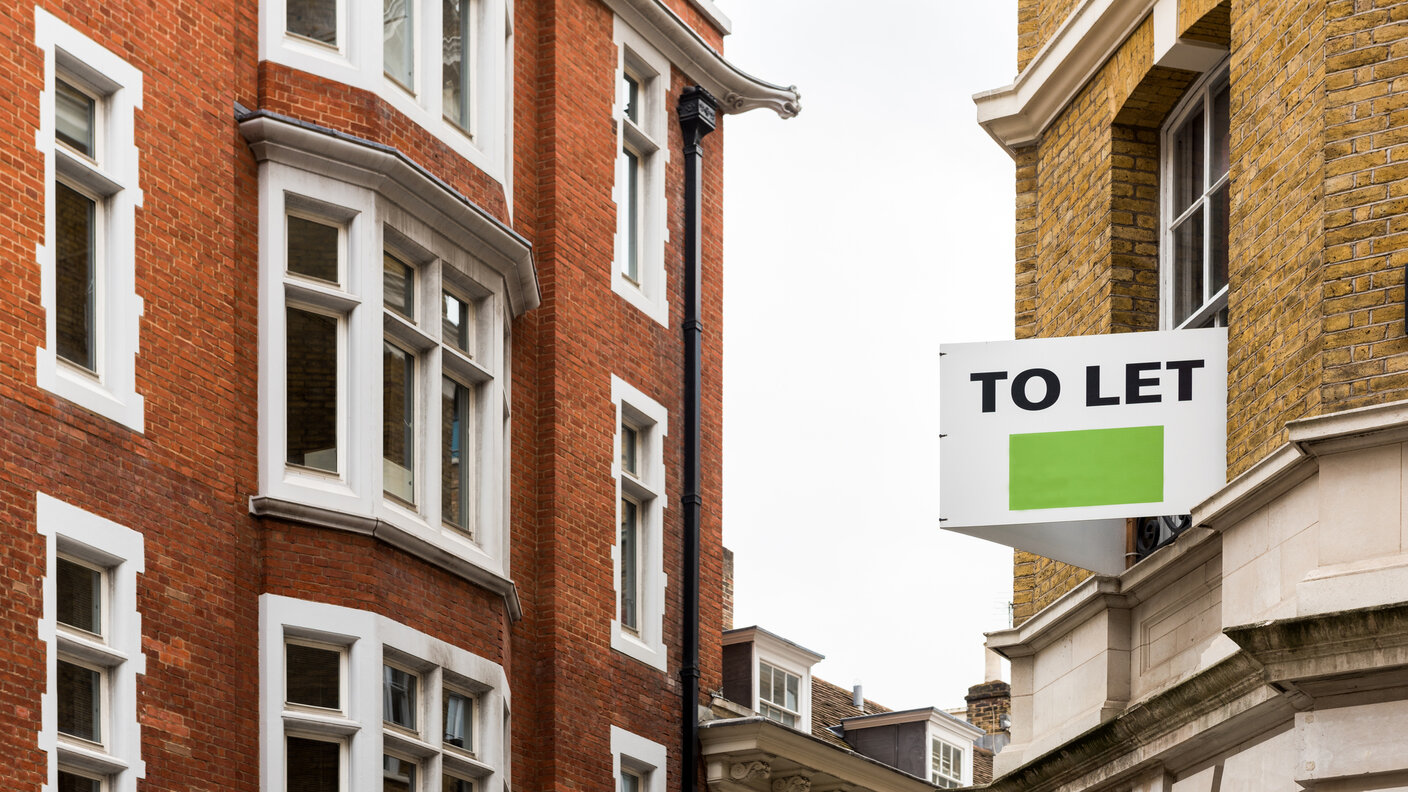With rents set to rise, should you take a chance on buy-to-let or give up?
Landlord profitability is at its lowest level in 16 years as buy-to-let mortgage rates rise – but could this change, with experts suggesting rents could rise rapidly in the coming years?

Pedro Gonçalves

Rents could rise over four times more than house prices over the next four years due to higher interest rates, estate and lettings agent Hamptons predicts.
Rising interest rates have been eating into the profitability of buy-to-let investments, prompting landlords to rethink whether buy-to-let is still worth it.
So could this mean it’s better to hold on to your investments?
MoneyWeek
Subscribe to MoneyWeek today and get your first six magazine issues absolutely FREE

Sign up to Money Morning
Don't miss the latest investment and personal finances news, market analysis, plus money-saving tips with our free twice-daily newsletter
Don't miss the latest investment and personal finances news, market analysis, plus money-saving tips with our free twice-daily newsletter
RENTS PREDICTED TO RISE
Hamptons expects rents to jump by 25% to almost £1,600 a month by the end of 2026, compared with 5.5% growth in house prices.
In London, rents are likely to rise faster than other regions across the country – by 9% in 2023 and slowly see a decline to 8% in 2024.
Using the Office for National Statistics (ONS) House Price Index, which tracks all completed sales, the property services company reported that house prices are likely to fall by a fairly significant 7.4% compared with 10.6% in 1990 and 16.5% in 2008.
The firm noted the regions where affordability is most stretched, such as the South West and South East, would see the biggest drop in values. Hamptons also predicted that average house prices in Wales would fall by 4%, noting that the region had seen the strongest price growth of 56% between 2015 and 2022.
Aneisha Beveridge, head of research at Hamptons, says there is a strong argument that “the Bank of England’s quest to quell inflation has hit the rental sector harder than any other part of the housing market.”
“A build-up of long-term supply issues combined with soaring landlord costs is putting upward pressure on rents,” she said.
“It’s hard to see any of these pressures receding any time soon, which is why we expect rents to continue rising over the next few years.”
RISING MORTGAGE RATES EAT INTO RETURNS
The Bank of England’s (BoE) latest rate hike is causing more pain for landlords and buy-to-let investors, raising questions about whether buy-to-let properties are still the profitable investment they once were.
Rising interest rates are pilling pressure on landlords with mortgages, forcing many to either sell up or pass on the pain to tenants.
The BoE hiked rates to 5.25% when it last met, placing further pressure on the housing market as mortgage rates rise.
Investors are currently betting that rate-setters will increase the base rate again at their next meeting on September 21 to 5.5%.
Currently the average two year fixed-rate buy-to-let mortgage is 6.67%, up from 6.40% mid-June. The rate for a five year fixed-rate mortgage is 6.16%, up from 6.29% mid-June.
Landlord profits are at their lowest level in 16 years, according to the National Residential Landlords Association (NRLA). What’s more, the BoE has warned monthly repayments on buy-to-let mortgages may only increase over the next two years, suggesting things are only going to get worse.
“This comes as some landlords have already seen their mortgage payments increase by almost 240% since December 2021,” says Ben Beadle, chief executive of the NRLA.
“With landlord profits at their lowest level for 16 years, the vast majority are doing all they can to protect tenants from the impact of growing mortgage rates,” adds Beadle.
“However, without Government action, renters face a bleak future as growing costs lead to a loss of more rental homes from the market.”
But landlords that are selling are also losing money.
So far this year the average landlord in England and Wales has sold their buy-to-let for £94,800 more than they initially paid for the property, having owned it for an average of 11 years, according to Hamptons.
This gain has shrunk by around 10% or £10,500 from a record £105,300 achieved last year, and is similar to what landlords selling in 2016 typically achieved.
Smaller terraced houses and flats, which have seen weaker price growth in recent years, have made up a higher share of buy-to-let sales so far this year.
Hamptons calculated that one in 16 (6%) landlords have sold at a loss so far in 2023, slightly up from one in 20 (5%) last year.
SO IS NOW THE TIME TO GIVE UP ON BUY-TO-LET?
“Following a boom period for buy-to-let landlords, 2023 marks a turning point for Britain’s private rented sector. Between 2014 and 2021, landlords on average were making ‘year 1’ cash profits of 23% of rental income, but successive interest rate hikes have seen this figure plummet to under 4% this year,” says Lucian Cook, head of residential research at Savills.
“The incoming Renters Reform Bill, abolition of the Assured Shorthold Tenancy, and increasing EPC regulations, are expected to add to investors’ caution as landlords now face the prospect of having to invest to bring their properties up to a minimum EPC, further eating into profits.
Parliament is discussing the renters’ reform bill, which would abolish no-fault evictions, introduce rolling tenancies, and prevent landlords from dismissing tenants with pets or on benefits. This could prompt more landlords to exit the market.
Additionally landlords are currently facing a nearly £18bn bill to upgrade their properties to an Energy Performance Certificate (EPC) rating of C or above – but the high cost of doing so, coupled with the decrease in rental yields due to higher mortgages, have clearly pushed some landlords towards selling.
“There is a very real risk that landlords will exit the sector, particularly those with high levels of borrowing, putting increased pressure on a sector where demand significantly outweighs supply in many locations,” adds Cook.
Other headwinds facing the buy-to-let sector
Buy-to-let properties incur a 3% surcharge on top of the standard rate of stamp duty tax, and buy-to-let income is also subject to income tax. As fiscal drag pushes more people into higher tax bands, landlords are going to find themselves paying more tax (the rules on stamp duty and tax on income are different for landlords that use limited companies to invest in property).
Additionally, mortgage interest tax relief has become far less generous over the last couple of years.
Changes to the system made in 2020 mean higher or additional-rate taxpayers are no longer able to claim the tax back on their mortgage repayments. Now, they can only receive refunds at the basic 20% rate, another cost they have to consider when renting out properties (once again the rules are different for limited company property investors).
But still, data from Octane Capital shows the total value of loans issued to buy-to-let investors has climbed by 12% over the last year, meaning some landlords could be snapping up bargains as property prices fall.
Join us at the MoneyWeek Summit on 29.09.2023 at etc.venues St Paul's, London.
Tickets are on sale at www.moneyweeksummit.com
MoneyWeek subscribers receive a 25% discount.
Get the latest financial news, insights and expert analysis from our award-winning MoneyWeek team, to help you understand what really matters when it comes to your finances.
Nic studied for a BA in journalism at Cardiff University, and has an MA in magazine journalism from City University. She has previously worked for MoneyWeek.
- Pedro GonçalvesContributor
-
 Boost for over 100,000 families on Child Benefit as new HMRC payment system rolled out
Boost for over 100,000 families on Child Benefit as new HMRC payment system rolled outThousands of households will no longer have to pay the dreaded High Income Child Benefit Charge through self-assessment
-
 Are you being haunted by the ghost of Christmas past? How festive cutbacks could boost your long-term wealth
Are you being haunted by the ghost of Christmas past? How festive cutbacks could boost your long-term wealthThe average family spends around £1,000 over the Christmas season. Here’s how much you could have gained if you had invested some of the money instead.
-
 Halifax: House price slump continues as prices slide for the sixth consecutive month
Halifax: House price slump continues as prices slide for the sixth consecutive monthUK house prices fell again in September as buyers returned, but the slowdown was not as fast as anticipated, latest Halifax data shows. Where are house prices falling the most?
-
 Rents hit a record high - but is the opportunity for buy-to-let investors still strong?
Rents hit a record high - but is the opportunity for buy-to-let investors still strong?UK rent prices have hit a record high with the average hitting over £1,200 a month says Rightmove. Are there still opportunities in buy-to-let?
-
 Pension savers turn to gold investments
Pension savers turn to gold investmentsInvestors are racing to buy gold to protect their pensions from a stock market correction and high inflation, experts say
-
 Where to find the best returns from student accommodation
Where to find the best returns from student accommodationStudent accommodation can be a lucrative investment if you know where to look.
-
 The world’s best bargain stocks
The world’s best bargain stocksSearching for bargain stocks with Alec Cutler of the Orbis Global Balanced Fund, who tells Andrew Van Sickle which sectors are being overlooked.
-
 Revealed: the cheapest cities to own a home in Britain
Revealed: the cheapest cities to own a home in BritainNew research reveals the cheapest cities to own a home, taking account of mortgage payments, utility bills and council tax
-
 UK recession: How to protect your portfolio
UK recession: How to protect your portfolioAs the UK recession is confirmed, we look at ways to protect your wealth.
-
 Buy-to-let returns fall 59% amid higher mortgage rates
Buy-to-let returns fall 59% amid higher mortgage ratesBuy-to-let returns are slumping as the cost of borrowing spirals.
